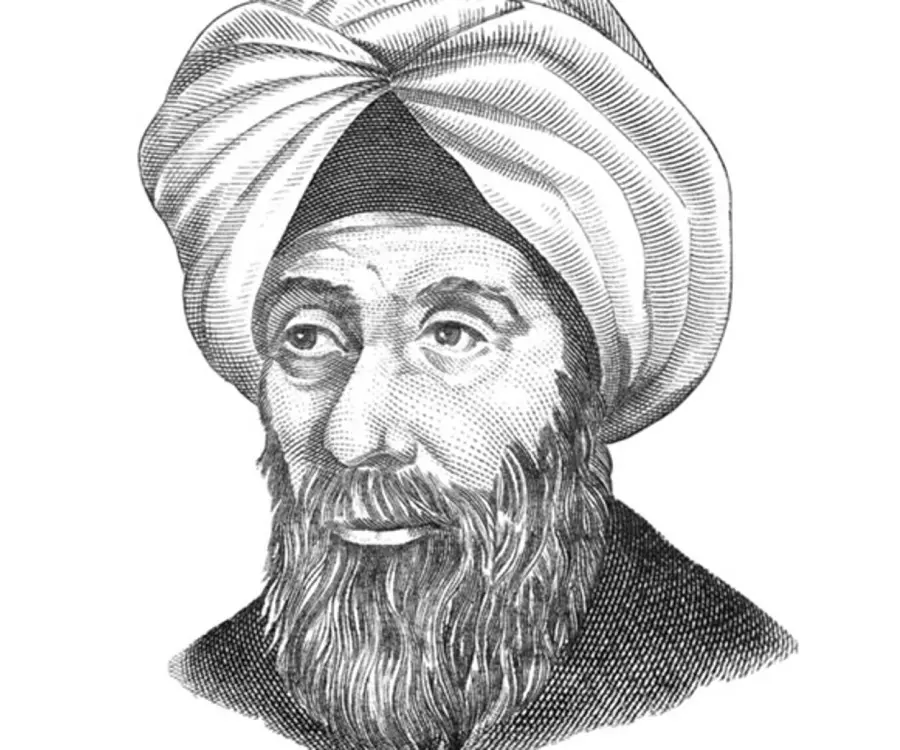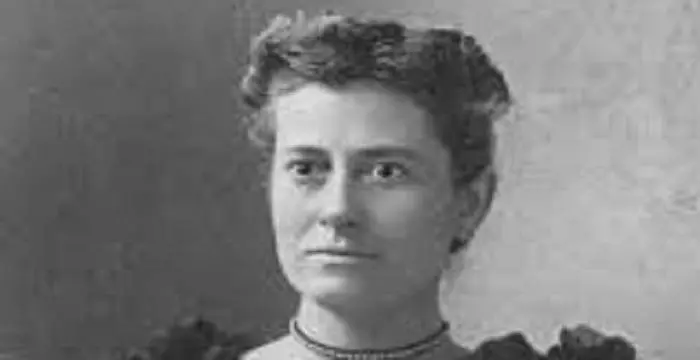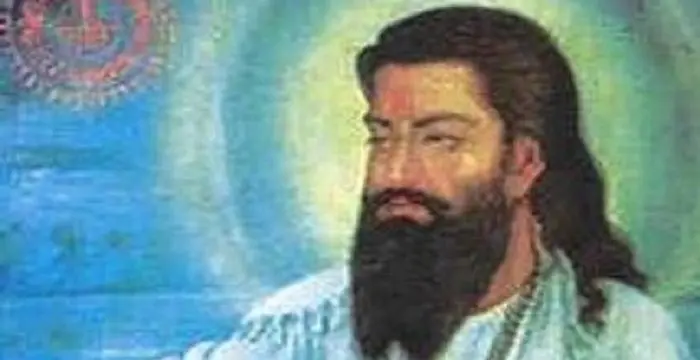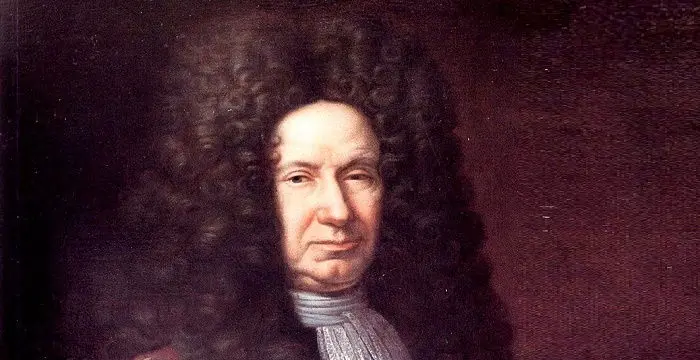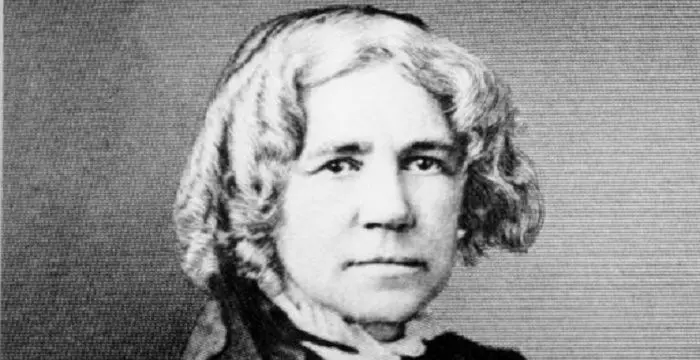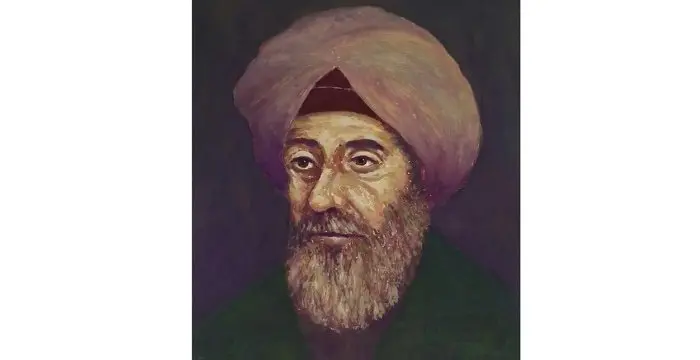
Ibn-al-Haytham - Mathematicians, Family and Personal Life
Ibn-al-Haytham's Personal Details
Ibn-al-Haytham was an illustrious Arab Muslim scientist, philosopher, mathematician, and astronomer
| Information | Detail |
|---|---|
| Birthday | July 1, 965 |
| Died on | March 6, 1040 |
| Nationality | Iraqi |
| Famous | Intellectuals & Academics, Philosophers, Scientists, Mathematicians, Astronomers, Physicists |
| Nick names | Alhazen, al-Basri |
| Known as | Abū ʿAlī al-Ḥasan ibn al-Ḥasan ibn al-Haytham |
| Birth Place | Basra, Iraq |
| Gender | Male |
| Sun Sign | Cancer |
| Born in | Basra, Iraq |
| Famous as | Scientist, Physicist, Mathematician |
| Died at Age | 74 |
// Famous Intellectuals & Academics
Bertil Gotthard Ohlin
Bertil Gotthard Ohlin was a famous Swedish economist. This biography profiles his childhood, family life & achievements.
Emily Greene Balch
Emily Greene Balch was an American economist, sociologist and pacifist who won the 1946 Nobel Peace Prize. This biography of Emily Greene Balch provides detailed information about her childhood, life, achievements, works & timeline.
Martin Buber
One of the greatest philosophers to have ever walked on earth, Martin Buber contributions to philosophy is a long-standing one. Explore all about his profile, childhood, life and timeline here.
Ibn-al-Haytham's photo
Who is Ibn-al-Haytham?
Ibn-al-Haytham, variously referred to as ‘al-Basri’ or by his Latinized name, ‘Alhazen’ was an illustrious Arab Muslim scientist, philosopher, mathematician, and astronomer. Al-Haytham earned and cemented his place in the hallowed portals of greatest human achievements by making noteworthy contributions to optics, mathematics, astronomy, and other academic disciplines. Regarded as the father of optics, he propounded a hypothesis on visual perception that remained relevant for the subsequent 600 years. Ibn-al-Haytham lived mostly in Cairo, staying in touch with the Fatimid Caliphate, earning his livelihood by duplicating manuscripts, writing treatises, and instructing members of the royal family and nobilities. He garnered fame as a physicist early on in his youth, and was called upon by Al-Hakim, the eccentric Fatimid Caliph to travel to Egypt to dam the turbulent Nile. However, after journeying down the river, he realized that it would be futile to build a dam with the contemporary technology. Given Al-Hakim’s unstable state of mind, al-Haytham was apprehensive of incurring Al-Hakim’s wrath were he to apprised him about the futility of the project, and therefore threw up a tantrum pretending to be insane. His tactic saved his life as he was imprisoned in his own home for the 10 years that Al-Hakim survived which gave him enough time to conduct research on optics, astronomy, arithmetic, geometry, and physics.
// Famous Scientists
Juliane Koepcke
Juliane Koepcke is a German-Peruvian biologist, who was the lone survivor among the 92 passengers and crew of the ill-fated LANSA Flight 508 that crashed in the Peruvian rainforest on 24 December 1971. Know more about her life in this biography.
Henry Cavendish
Henry Cavendish was a theoretical chemist and physicist, renowned for discovery of hydrogen and calculation of the mass of earth. To know more about his childhood, profile, timeline and career read on
Konstantin Tsiolkovsky
Konstantin Tsiolkovsky was a Russian rocket scientist and a pioneer of astronautics. This biography provides detailed information about his childhood, family, personal life, career, achievements, etc.
Childhood
Ibn-al-Haytham was born in the city of Basra in Southern Iraq (which was then under the Buyid Emirate), around 965 CE.
Overview of Life
After completing his formal education in Basra, he relocated to Cairo, Egypt then ruled by Al-Hakim, the Fatimid Caliph who patronized the sciences, especially astronomy.
It is said that Ibn-Al-Haytham made a proposal to the Caliph to construct a weir (at the same location where Aswan Dam stands today) in order to tame the tumultuous Nile. However, historians and chroniclers are at variance regarding the veracity of the above proposition.
It later dawned on al-Haytham that building a dam over the river may not prevent the waterway from flooding its banks. However, he was terrified of revealing the truth to Al-Hakim who was notorious for his irrational ways and therefore in order to save himself from getting executed, he pretended to be insane.
Al-Haytham was detained in his house from 1011 to 1021, till Al-Hakim died. It was during his detention that he penned the seminal ‘Book of Optics’ which is considered his masterpiece, and also authored pieces on astronomy, philosophy, number theory, and geometry.
Legacy &Influences
Ibn-al-Haytham not only pioneered new theories, concepts, and postulates in geometry, astronomy, natural philosophy, and arithmetic but also gave fresh insight to these disciplines by correcting erroneous propositions believed to be hitherto flawless. However, his most noteworthy contributions were in optics, a branch of physics, and it is epitomized by his magnum opus, the ‘Kitab al-Manazir’.
He was perhaps the first researcher and scientist to stress on the imperativeness of proving a hypothesis or theorem through experiments using scientific methods. In the past, academics and scholars banked on reason and divinity for substantiating a proposition or concept.
Al-Haytham drew inspiration from several Greek, Persian, and Turkish scholars including Aristotle, Ptolemy, Euclid, Pythagoras, Galen, Abu Sahl al-Quhi, Ibn Sahl, Al-Kindi, Thabit Ibn Qurra, and Banu Musa for his observations.
His works influenced luminaries like Averroes, Omar Khayyam, Taqi-ad-din Muhammad Ibn Mar’uf, Kamal al-din al-Farisi, Johannes Kepler, and Roger Bacon.
Kitab-al-Manazir (Book of Optics)
’Kitab-al-Manazari’, a seven-tome compilation on optics was Al-Haytham’s most notable work written over a period of ten years. The credit for revealing the significance of this encyclopedic work in the Muslim dominions goes to Kamal al-din al-Farisi, the 13th century Persian scientist who made commentaries on the work.
Al-Haytham endeavored to strike a balance between two key postulates on vision that prevailed in the Greco-Roman world. The primary proposition, ‘Emission Theory’ propounded by Ptolemy and Euclid, stressed that the eyes emitted light rays resulting in the perception of vision.
The second hypothesis, the ‘Intromission Theory’ backed by Aristotle hinted that light bounced off of different subjects and objects to enter the eye making visualization possible. Al-Haytham drew heavily from Ptolemy’s ‘Optics’, Euclid, and Aristotle as well as cited Galen for describing the eye’s physiology and anatomy.
He commented that light rays hit the eyes after rebounding from objects and not the other way round as the sight organs experienced pain when an individual looked at the sun directly. He refuted the assertion that the eyes sent out beams of light.
Light rays of different colors given off by self-illuminating transparent bodies and opaque sources are picked up by the eyes when they lie in the line of sight. The incident rays form an impression in the eyes’ glacial humor is interpreted by the mind as vision or sight enabling the individual to see.
The above supposition which formed the crux of Al-Haytham’s vision theory became the cornerstone for all future discussions and debates on optics in the countries of Europe till the 17th century
The Scientific Analysis
Al-Haytham relied heavily on supervised testing and systematic experiments to back up his researches and investigations he undertook in the aforementioned academic disciplines. The practice of using methodical experimentations in a consistent and even manner for establishing the legitimacy of propositions was pioneered by him.
Alhazen's
Al-Haytham’s discussed at length on catoptrics—a section of optics dealing with light reflections from mirrors or objects with mirror-like surfaces—in volume 5 of ‘Kitab-al-Manazari’ that was termed as ‘Alhazen’s problem. It was Ptolemy, the Greek polymath who first dabbled in catoptrics in 150 A.D.
Al-Haytham analyzed the intricacies involved with reflections from different types of mirrors and mirror-like objects in his own way. He dealt with the catoptrics problem by attempting to work out the point and angle of reflection from curved or plane surfaces when the observer was focusing on an object.
Al-Haytham analogized the catoptrics predicament first propounded by Ptolemy diagrammatically and solved it geometrically using conic representations. His other important optical contributions include ‘A Discourse on Light’, ‘On the Shape of the Eclipse’, ‘On Halo and Rainbow’, and ‘On the Light of the Moon’.
Other Works on Physics
Al-Haytham touched space physics which can be found in his treatise ‘Epitome of Astronomy’ and maintained that Ptolemaic astronomy models could be correlated with physical objects for understanding them. He also explored ‘mechanics’ another branch of physics discussing in detail about the different forces acting on a body that creates motion.
Works on Astronomy
Al-Haytham’s works on astronomy have contributed greatly towards the development of this specific branch of science. He offered a comprehensive account of the earth’s physical structure and composition in ‘On the Configuration of the World’. In ‘Doubts Concerning Ptolemy’ he indicated and specified several incongruities in Ptolemy’s works including ‘Almagest’, ‘Optics’, and ‘Planetary Hypotheses’.
Al-Haytham’s works on astronomy have contributed greatly towards the development of this specific branch of science. He offered a comprehensive account of the earth’s physical structure and composition in ‘On the Configuration of the World’. In ‘Doubts Concerning Ptolemy’ he indicated and specified several incongruities in Ptolemy’s works including ‘Almagest’, ‘Optics’, and ‘Planetary Hypotheses’.
Al-Haytham’s works on astronomy have contributed greatly towards the development of this specific branch of science. He offered a comprehensive account of the earth’s physical structure and composition in ‘On the Configuration of the World’. In ‘Doubts Concerning Ptolemy’ he indicated and specified several incongruities in Ptolemy’s works including ‘Almagest’, ‘Optics’, and ‘Planetary Hypotheses’.
Al-Haytham’s works on astronomy have contributed greatly towards the development of this specific branch of science. He offered a comprehensive account of the earth’s physical structure and composition in ‘On the Configuration of the World’. In ‘Doubts Concerning Ptolemy’ he indicated and specified several incongruities in Ptolemy’s works including ‘Almagest’, ‘Optics’, and ‘Planetary Hypotheses’.
He wrote another book on astronomy, titled ‘The Model of the Motions of Each of the Seven Planets’ in c. 1038. He authored 25 volumes on astronomy that basically centered on astronomical observations, problems, and technical issues.
Works on Mathematics
Al-Haytham carried forward the mathematical postulates of Thabit Ibn Qurra and Euclid, especially on “the beginnings of the link between algebra and geometry”. He recorded his observations on ‘Euclidean parallel postulate’ and created the ‘Lambert quadrilateral’ also called ‘Ibn-Al-Haytham-Lambert quadrilateral’. He tried to find a solution to how to square a circle.
He experimented on ‘perfect numbers’ in his mathematical project named, ‘Analysis and Synthesis’. He solved the Wilson’s Theorem’ in another mathematical project called ‘Opuscula’. He also made significant contributions to ‘Calculus’ including the summation equation for the 4th power which helped him in determining a paraboloid’s volume.
Other Works & Contributions
Apart from making constructive and groundbreaking contributions to mathematics, astronomy, optics, physics, and geometry, Al-Haytham also forayed into engineering, philosophy, and theology. He conducted an in-depth analysis of the Nile’s deluging its banks and laid out a blueprint for constructing a dam over the river.
He penned ‘Treatise on Place’ where he refuted the Aristotlean philosophy that Nature was not vacuous. He attempted to demonstrate geometrically that it (Nature) was actually void, similar to the presumed 3-dimensional emptiness within a body’s inner surfaces.
Al-Haytham was a staunch follower of the Islam faith and wrote a book based on Islamist theology that elaborated on prophethood and listed a set of idealistic criterions to discourage phoney candidates pretending to be oracles.
Death
Ibn al-Haytham died around c. 1040, in Cairo, Fatimid Caliphate.
He did not get the credit that was due to him on account of his works that covered a wide variety of academic disciplines and topics. Nevertheless, it would not be an exaggeration to state that the quintessential polymath’s diverse body of work has inspired researchers, scholars, and intellectuals who followed him.
// Famous Mathematicians
Grigori Perelman
Grigori Perelman is a Russian mathematician who is best known for his contributions to Riemannian geometry and geometric topology. Check out this biography to know about his childhood, family life, achievements and fun facts about him.
Terence Tao
Terence Tao is an Australian- American mathematician who has contributed enormously to the field of mathematics. Check out this biography to know about his childhood, family life and achievements.
Isaac Newton
Isaac Newton was an English scientist and mathematician, who discovered gravitation and Newtonian Mechanics. Read this biography to find more on his life.
Ibn-al-Haytham biography timelines
- // 150Al-Haytham’s discussed at length on catoptrics—a section of optics dealing with light reflections from mirrors or objects with mirror-like surfaces—in volume 5 of ‘Kitab-al-Manazari’ that was termed as ‘Alhazen’s problem. It was Ptolemy, the Greek polymath who first dabbled in catoptrics in 150 A.D.
- // 965Ibn-al-Haytham was born in the city of Basra in Southern Iraq (which was then under the Buyid Emirate), around 965 CE.
- // 1011 To 1021Al-Haytham was detained in his house from 1011 to 1021, till Al-Hakim died. It was during his detention that he penned the seminal ‘Book of Optics’ which is considered his masterpiece, and also authored pieces on astronomy, philosophy, number theory, and geometry.
- // 1038He wrote another book on astronomy, titled ‘The Model of the Motions of Each of the Seven Planets’ in c. 1038. He authored 25 volumes on astronomy that basically centered on astronomical observations, problems, and technical issues.
- // 1040Ibn al-Haytham died around c. 1040, in Cairo, Fatimid Caliphate.
// Famous Astronomers
Jabir Ibn Hayyan
Jabir Ibn Hayyan was a medieval era polymath. Check out this biography to know about his life, works and achievements.
Isaac Newton
Isaac Newton was an English scientist and mathematician, who discovered gravitation and Newtonian Mechanics. Read this biography to find more on his life.
Henrietta Swan Leavitt
Henrietta Swan Leavitt was an American astronomer. Check out this biography to know about her childhood, family, personal life, discoveries, achievements, etc.
Brahmagupta
Brahmagupta was a highly accomplished ancient Indian astronomer and mathematician. This biography of Brahmagupta provides detailed information about his childhood, life, achievements, works & timeline.
Giovanni Domenico Cassini
Giovanni Cassini was a 17th century Italian mathematician, astronomer and astrologer. This biography of Giovanni Cassini provides detailed information about his childhood, life, achievements, works & timeline.
Maria Mitchell
Maria Mitchell was the first professional female astronomer in the United States. This biography of Maria Mitchell provides detailed information about her childhood, life, achievements, works & timeline
Ibn-al-Haytham's FAQ
What is Ibn-al-Haytham birthday?
Ibn-al-Haytham was born at 0965-07-01
When was Ibn-al-Haytham died?
Ibn-al-Haytham was died at 1040-03-06
Which age was Ibn-al-Haytham died?
Ibn-al-Haytham was died at age 74
Where is Ibn-al-Haytham's birth place?
Ibn-al-Haytham was born in Basra, Iraq
What is Ibn-al-Haytham nationalities?
Ibn-al-Haytham's nationalities is Iraqi
What is Ibn-al-Haytham nick names?
Ibn-al-Haytham's nickNames is Alhazen, al-Basri
What is Ibn-al-Haytham's sun sign?
Ibn-al-Haytham is Cancer
How famous is Ibn-al-Haytham?
Ibn-al-Haytham is famouse as Scientist, Physicist, Mathematician



